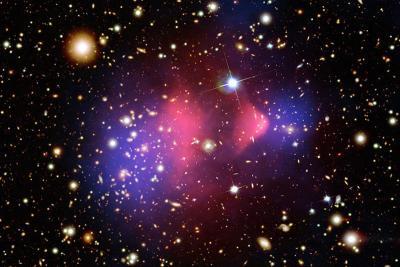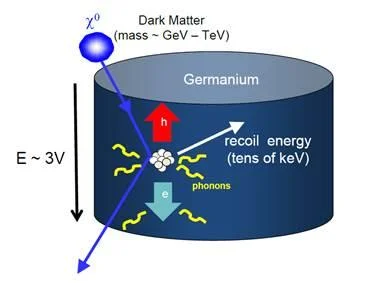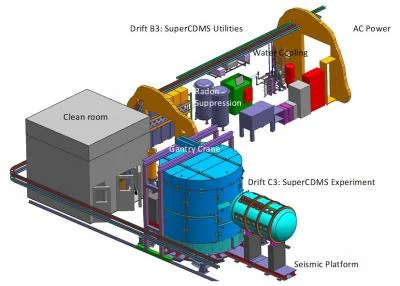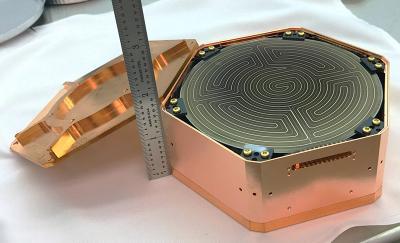Experiment Overview
Observations of galaxies, galaxy clusters, distant supernovae, and the cosmic microwave background radiation tell us that ~85% of the matter in the universe is comprised of dark matter. This form of matter may be made of elementary particles that interact only weakly with the normal matter described by the Standard Model of particle physics. Deciphering the nature of this dark matter would be of fundamental importance to cosmology, astrophysics, and particle physics.
The Cryogenic Dark Matter Search (SuperCDMS) is one of several collaborations performing experiments to directly detect these particles and thus understand the nature of the dark matter.
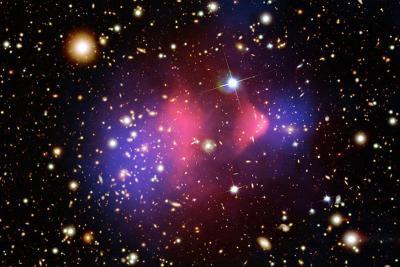
dark-matter-particle.jpg
A collision of clusters of galaxies, showing separation of dark matter (shaded blue) from normal matter (shaded pink).
Direct Detection of Dark Matter Particles
Schematic of the interaction of a dark matter particle with a nucleus, showing the resulting energy deposition generating ionization and phonon signals.
According to models of cosmological structure formation, the luminous matter of galaxies is gravitationally bound to a more massive halo of dark matter. Should the dark matter of the universe consist of unidentified
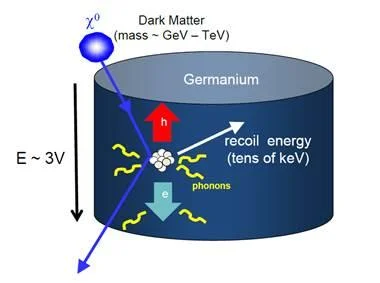
dark_matter.png
Schematic of the interaction of a dark matter particle with a nucleus, showing the resulting energy deposition generating ionization and phonon signals.
particles, our solar system and our planet would be passing through a flux of these dark matter particles which constitute the dark halo of the Milky Way galaxy. These dark matter particles could be detected directly using sensitive detectors located in underground laboratories, to shield them from interactions from normal matter particles. Such dark matter interactions would deposit a small, but measurable, amount of energy in an appropriately sensitive detector by elastically scattering from nuclei.
The SuperCDMS collaboration is searching for dark matter particles with masses smaller than ten times the mass of the proton. Such dark matter particles are a natural consequence of recent theories postulating the existence of a ‘dark sector’, paralleling the normal matter particles and interacting with them only weakly. Detecting these particles would open up a window into a completely unknown set of new particles.
The Experiment
Model of the SuperCDMS SNOLAB experiment as it will be located in the deep underground laboratory at SNOLAB.
SuperCDMS SNOLAB will be the successor to the previous generation of CDMS experiments, which were located deep underground in the Soudan mine in Minnesota, USA. SNOLAB (Vale Creighton Mine, Sudbury, Canada) is a much deeper and cleaner facility, providing significantly more
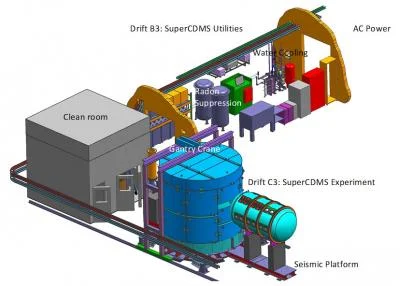
experiment-setup.png
Model of the SuperCDMS SNOLAB experiment as it will be located in the deep underground laboratory at SNOLAB.
shielding from high energy cosmic ray particles and from radioactive decay byproducts. It will include a cryogenics system designed to maintain the detectors at temperatures within a fraction of a degree above absolute zero in order to damp out thermal noise. This will be surrounded by layers of clean shielding materials to exclude radioactive backgrounds from the environment. The detectors located inside the cryostat will be modular and are arranged in towers that provide electrical connections and cooling. Special low-noise electronics will be used to process the detector signals, which will be gathered and stored by data acquisition and computing systems. Some of the detectors will be operated in a way that provides ultra-low energy thresholds while others will provide a precise measurement of backgrounds from normal matter interactions. This increases the chances of having a positive identification of dark matter particles or will allow much more stringent limits to be placed on the interaction of these elusive particles with normal matter.
SuperCDMS Detectors
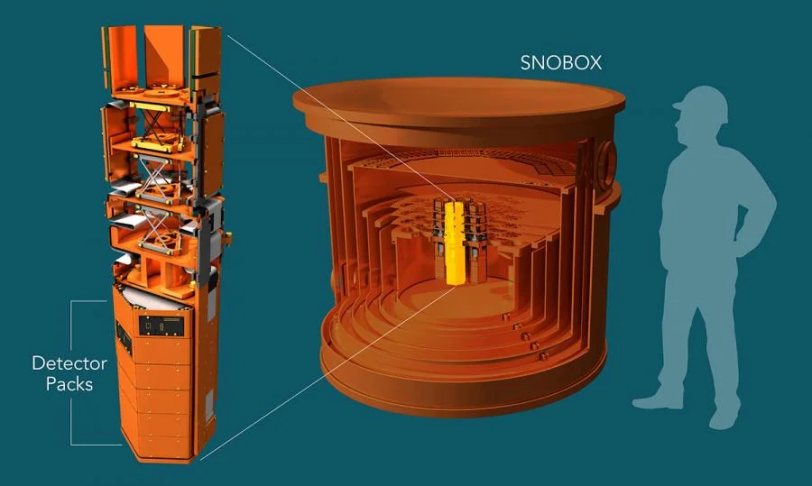
SuperCDMS detectors are designed with the primary function of detecting the minute crystal lattice vibrations (phonons) and ionization (charge) generated within the detector crystal by elastic collisions between detector nuclei and as low-mass dark matter particles. The energy deposited in a detector by an interacting dark matter particle may be as low as a few tens of electron volts (eV). Event detection at such energy levels requires
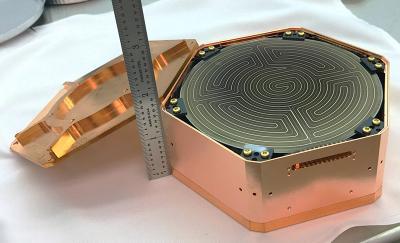
SuperCDMS-SNOLAB-detector.jpeg
Photo of a SuperCDMS SNOLAB prototype detector.
a sensitive experimental apparatus. The foremost requirement is that the detector be maintained at a very low temperature to distinguish the deposited energy from the thermal energy of the detectors nuclei.
The detectors require state-of-the-art thin film superconducting technology. Each of the germanium and silicon crystals (measuring 100 mm in diameter and 33 mm thick) have roughly 1000 sensors deposited on both faces of the detector. The phonon sensors consist of an array of tiny superconducting transition edge sensors which themselves consist of microscopic strips of tungsten coupled to aluminum "fins" to collect phonon energy from the crystal. Some of the detectors also collect ionization signals with a small voltage applied across the crystal while others convert the ionization to phonons using a much larger applied voltage.
